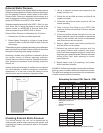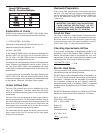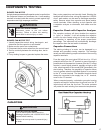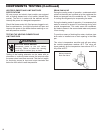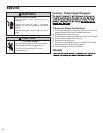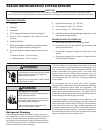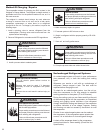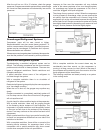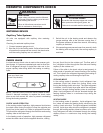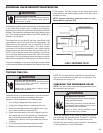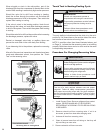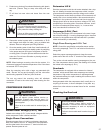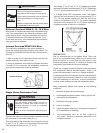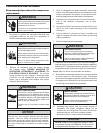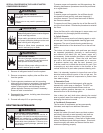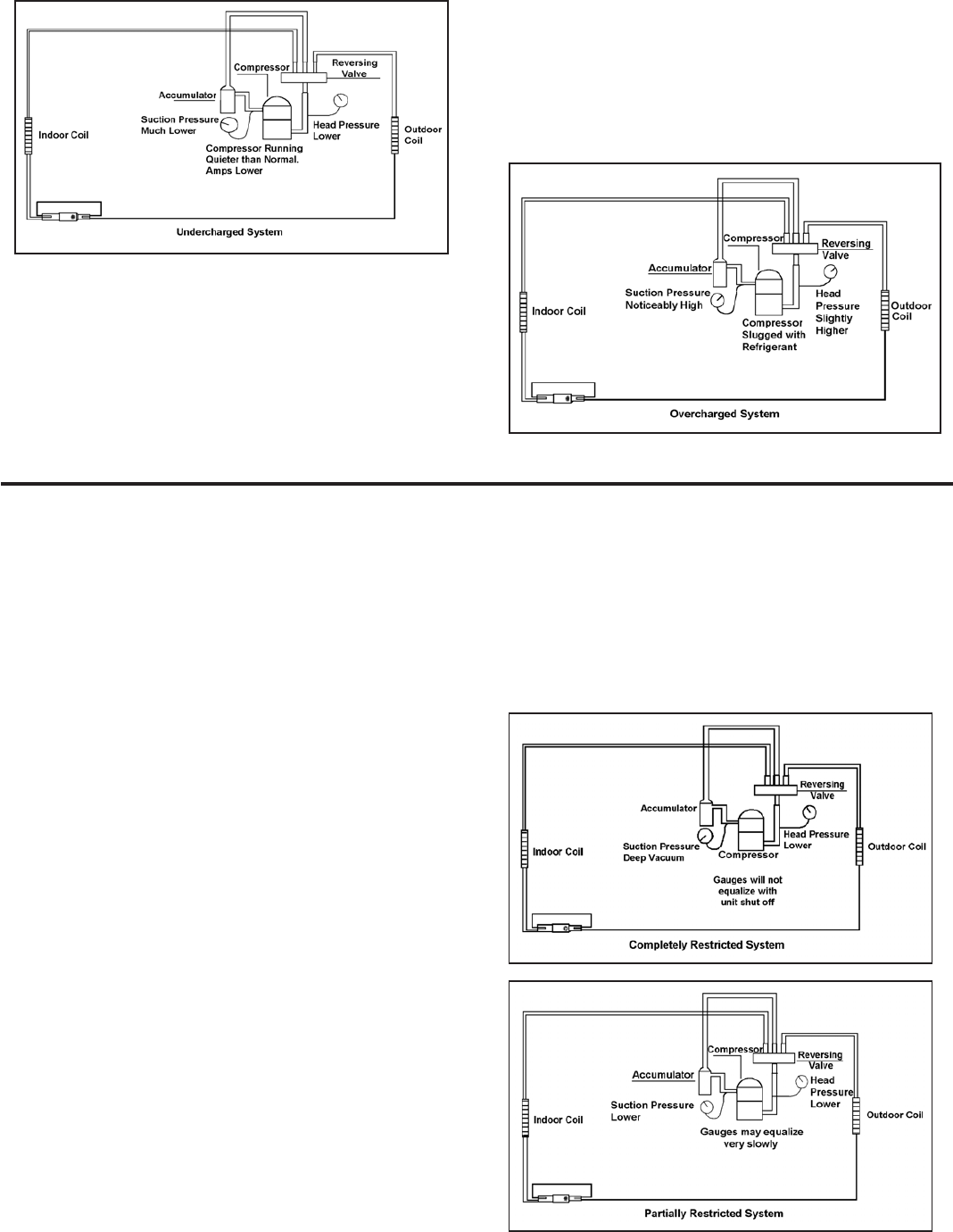
Overcharged Refrigerant Systems
After the unit has run 10 to 15 minutes, check the gauge
pressures. Gauges connected to system with an undercharge
will have low head pressures and substantially low suction
pressures.
Improper air ow over the evaporator coil may indicate
some of the same symptoms as an over charged system.
An overcharge can cause the compressor to fail, since it
would be “slugged” with liquid refrigerant.
The charge for any system is critical. When the compressor
is noisy, suspect an overcharge, when you are sure that the
air quantity over the evaporator coil is correct. Icing of the
evaporator will not be encountered because the refrigerant
will boil later if at all. Gauges connected to system will usually
have higher head pressure (depending upon amount of over
charge). Suction pressure should be slightly higher.
Compressor amps will be near normal or higher.
Noncondensables can also cause these symptoms. To
conrm, remove some of the charge, if conditions improve,
system may be overcharged. If conditions don’t improve,
Noncondensables are indicated.
Whenever an overcharged system is indicated, always make
sure that the problem is not caused by air ow problems.
Restricted Refrigerant System
Troubleshooting a restricted refrigerant system can be
difcult. The following procedures are the more common
problems and solutions to these problems. There are two
types of refrigerant restrictions: Partial restrictions and
complete restrictions.
A partial restriction allows some of the refrigerant to
circulate through the system.
With a complete restriction there is no circulation of
refrigerant in the system.
Restricted refrigerant systems display the same symptoms
as a “low-charge condition.”
When the unit is shut off, the gauges may equalize very
slowly.
Gauges connected to a completely restricted system will
run in a deep vacuum. When the unit is shut off, the gauges
will not equalize at all.
A quick check for either condition begins at the evaporator.
With a partial restriction, there may be gurgling sounds
at the metering device entrance to the evaporator. The
evaporator in a partial restriction could be partially frosted
or have an ice ball close to the entrance of the metering
device. Frost may continue on the suction line back to the
compressor.
Often a partial restriction of any type can be found by feel,
as there is a temperature difference from one side of the
restriction to the other.
With a complete restriction, there will be no sound at the
metering device entrance. An amperage check of the
compressor with a partial restriction may show normal
current when compared to the unit specication.
With a complete restriction the current drawn may be
considerably less than normal, as the compressor is
running in a deep vacuum (no load.) Much of the area of
the condenser will be relatively cool since most or all of the
liquid refrigerant will be stored there.
The following conditions are based primarily on a system
in the cooling mode.
23



